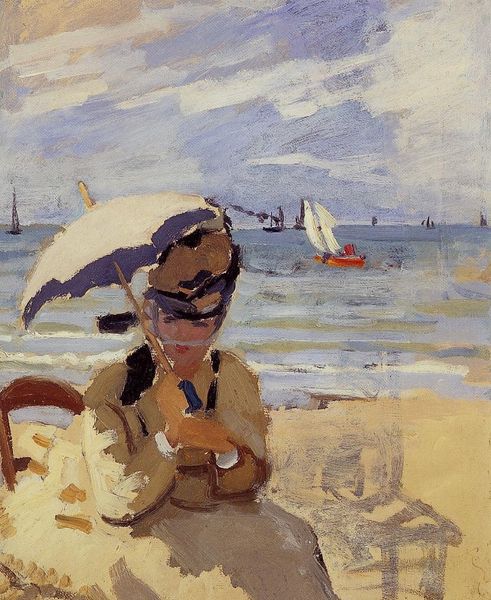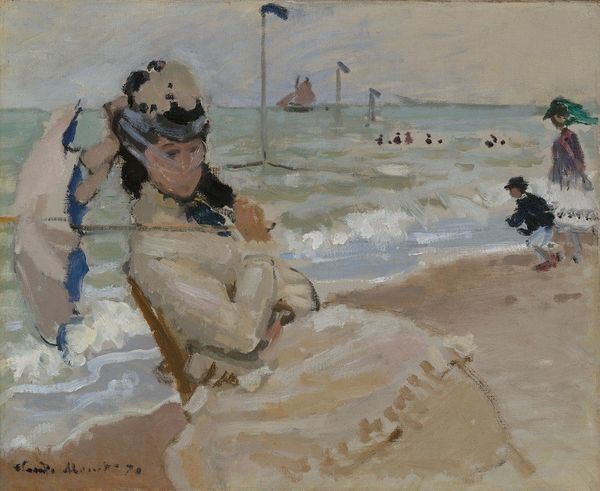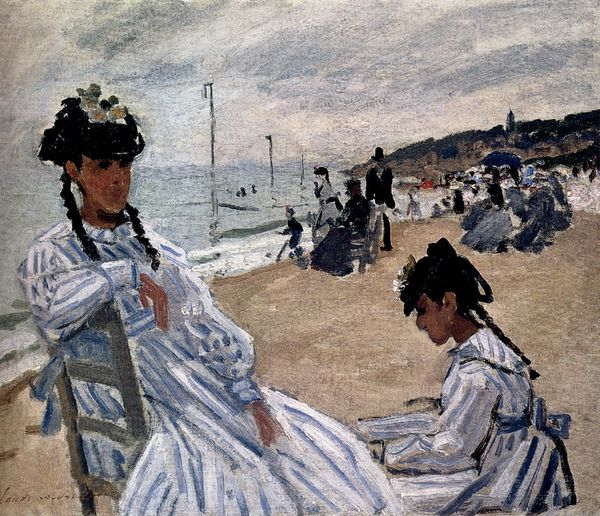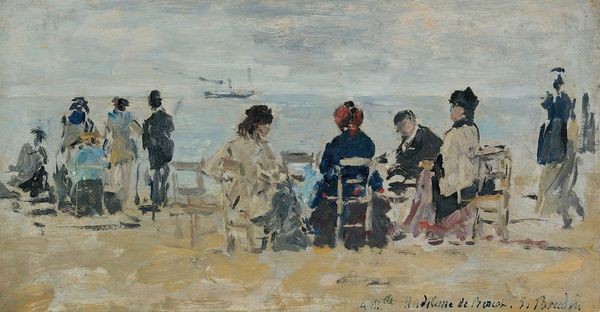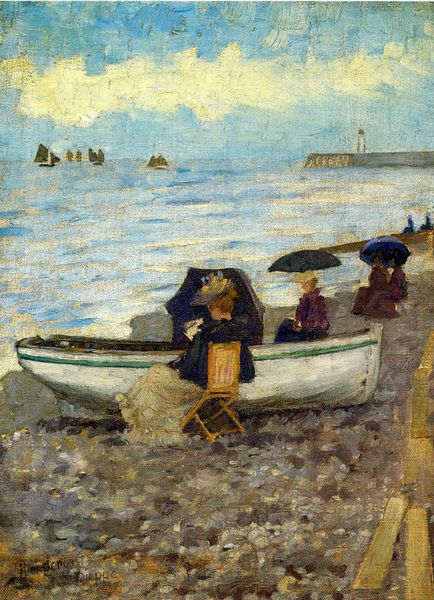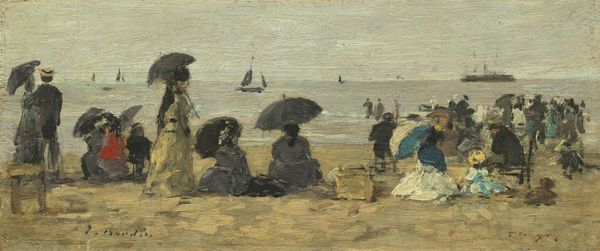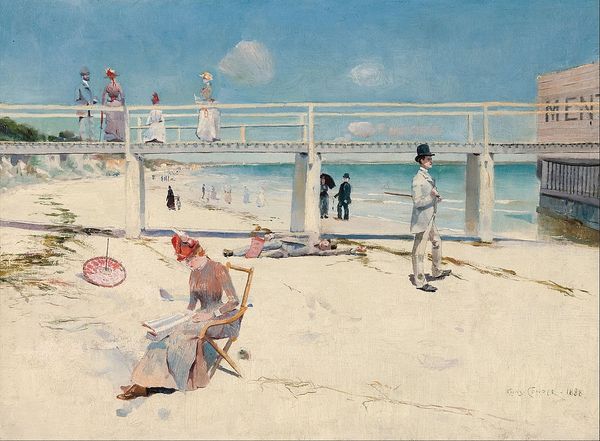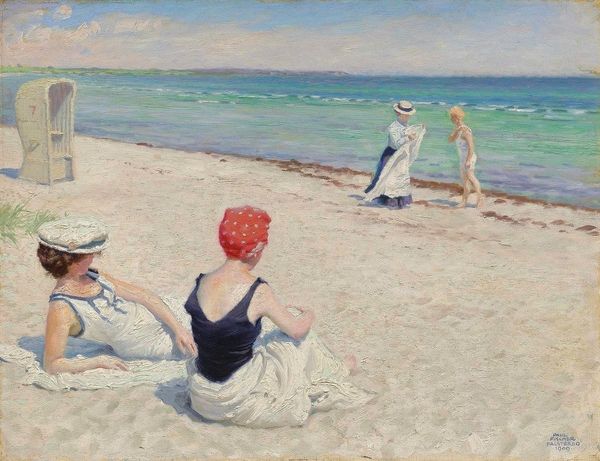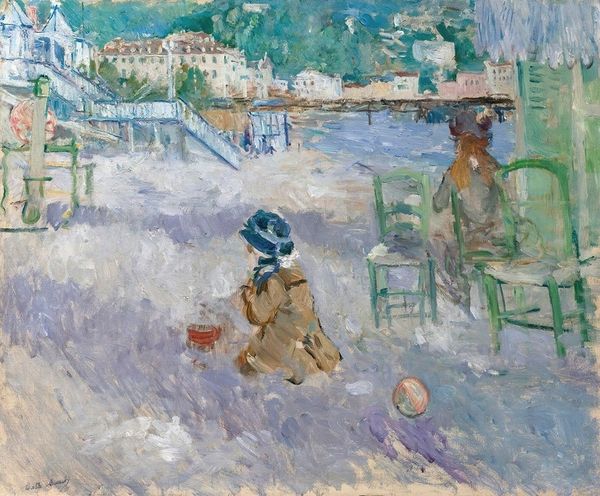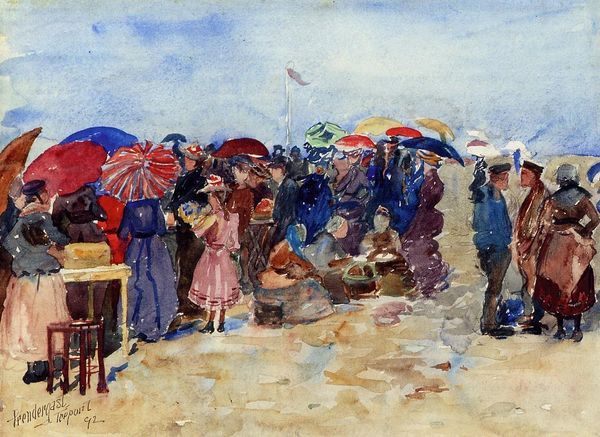
plein-air, oil-paint
#
portrait
#
impressionism
#
plein-air
#
oil-paint
#
landscape
#
painted
#
oil painting
#
cityscape
#
genre-painting
Copyright: Public domain
Curator: Oh, this is such a gem! Here we have Monet’s "The Beach at Trouville," painted in 1870. It’s oil on canvas, capturing a fleeting moment on the Normandy coast. Editor: You know, the first thing that hits me is how unsettled it feels. Not turbulent, just…not quite at rest. Maybe it's the visible brushstrokes, the way he captures the light, or the contrast of colours. There's something very intimate and in-motion about it, what do you think? Curator: I agree completely! It’s remarkable how he conveys that breezy, slightly damp atmosphere of the seaside. This period was marked by shifting social attitudes towards leisure. More public space was open to woman, yet modesty was required. Those umbrellas aren't just to keep sun off the skin they create social distance. Monet isn't painting some grand allegory; he's capturing everyday life as it unfolds. Editor: Absolutely, and consider the brushwork. It’s so free, so unlike the tightly controlled academic style of the time. I think it tells a story about a moment, not only that the people spent at the beach, but the act of witnessing that fleeting interaction between them and their setting, so ephemeral and real! And that unfinished quality – he’s not interested in perfect detail, is he? The Impressionists were much more preoccupied with rendering sensory perception Curator: Exactly! That sketchy, unfinished feel was revolutionary, a direct challenge to the established Salon painters. "Plein air", painting outside on the go to make room for impression and feeling! You feel that breezy atmosphere here – those light yellows, shades of whites and light blue are what captures the overall lightness. Also notice the parasols, they have slightly contrasting colours to create some division! The contrast enhances depth in such a light scene. Editor: The funny thing is, when it comes to those portraits, I want him to get away with those kinds of sketchy impressions. Its those facial impressions I enjoy most about this particular piece because its more challenging than any object. I feel he delivers such mood, it really is amazing. This makes for such an intriguing narrative about his subjectivities. Curator: Yes, capturing an emerging middle class with access to new modes of public entertainment like coastal bathing. “The Beach at Trouville” isn't merely a picture; it’s a moment in cultural history recorded in pure sunlight and brushstrokes. Editor: Such paintings mark a critical inflection point and are never to be seen the same. And yet, at the end, what I take away from it is much more basic than art or society. Curator: Oh, do tell! Editor: Honestly, after discussing all the highfalutin things here, I end up smiling just at the sea-and-sand colours, like a vintage postcard memory. Something special happens with a great piece of artwork, it always has many different approaches from which you can interpret, whether historical, societal, emotional or abstract!
Comments
No comments
Be the first to comment and join the conversation on the ultimate creative platform.
